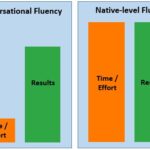Learner diversity encompasses the wide range of differences among individuals in a learning environment. These differences extend beyond easily observable characteristics like age or ethnicity, delving into the complex interplay of personal experiences, cultural backgrounds, learning styles, and individual motivations. Recognizing and addressing these diverse needs is crucial for creating effective and inclusive learning experiences.
Dimensions of Learner Diversity
Learner diversity can be broadly categorized into two interconnected dimensions: gross demographics and lifeworld attributes. Gross demographics refer to readily observable characteristics, while lifeworld attributes encompass the more nuanced and individual aspects of a learner’s identity.
Gross Demographics: The Visible Differences
These are the surface-level characteristics that often form the basis for initial classifications. Examples include:
- Material Factors: Socioeconomic status, geographic location, family structure. These factors can influence access to resources, prior learning experiences, and overall educational opportunities.
- Corporeal Factors: Age, race, sex, sexuality, physical and mental abilities. These inherent traits contribute to individual learning styles, preferences, and potential challenges.
- Symbolic Factors: Language, ethnicity, gender identity. These cultural and linguistic backgrounds shape perspectives, communication styles, and interaction within the learning environment.
Lifeworld Attributes: The Invisible Depths
These are the less visible yet equally significant aspects that shape individual learning experiences. They include:
- Narratives: Personal life experiences, sense of belonging, and individual stories that shape perspectives and motivations.
- Personae: Individual dispositions, sensibilities, and identities that influence learning styles and preferences.
- Affinities: Social networks, interests, values, worldviews, and stances that contribute to a learner’s unique perspective.
- Orientations: Epistemological beliefs, learning preferences, discursive styles, and interpersonal skills that affect how individuals engage with new information.
Beyond Recognition: The Transformative Journey of Learning
Acknowledging learner diversity isn’t simply about recognizing differences; it’s about fostering a learning environment that leverages these differences as strengths. Learning should be a journey that pushes learners beyond their comfort zones, expanding their perspectives and fostering personal and cultural transformation. This journey involves two key conditions:
1. Engaging Learner Identity (Belonging): Effective learning connects with the learner’s existing knowledge, experiences, interests, and motivations. It creates a sense of belonging where diversity is valued and utilized as a learning resource.
2. Fostering Transformation: Learning involves venturing into unfamiliar territories, expanding understanding, and developing new skills. This requires a safe and intelligible learning environment where challenges are appropriately paced and connected to prior knowledge.
Addressing Learner Diversity in Educational Design
Effective educational design should incorporate strategies that address the multifaceted nature of learner diversity. These strategies might include:
- Flexible Pacing and Grouping: Allowing for self-paced learning and varied group work to accommodate individual learning styles and preferences.
- Multiple Entry Points: Recognizing diverse prior knowledge and providing varied avenues for engaging with new material.
- Diverse Knowledge Processes: Incorporating a range of learning activities that cater to different learning orientations and promote active engagement.
- Varied Assessment Methods: Evaluating learning based on comparable performance relative to standards rather than solely on standardized tests.
- Multiple Exit Points: Acknowledging that learners may achieve different levels of understanding and offering diverse pathways for continued learning.
Conclusion: Embracing the Rich Tapestry of Learner Diversity
Understanding and embracing learner diversity is fundamental to creating effective and inclusive learning environments. By recognizing the complex interplay of individual characteristics, experiences, and learning styles, educators can design learning experiences that empower all learners to reach their full potential. This involves not only acknowledging differences but also fostering a sense of belonging and providing opportunities for transformative growth.
